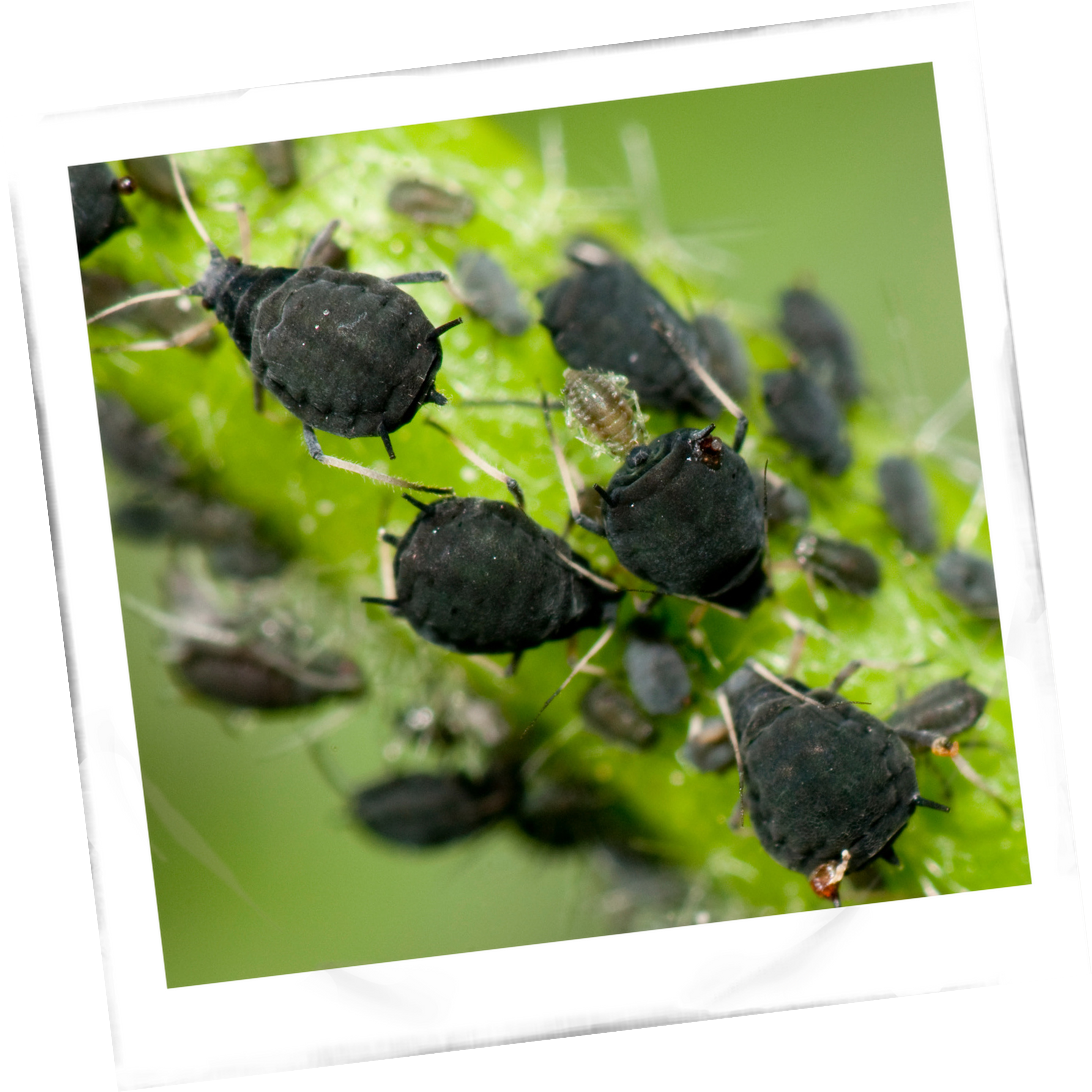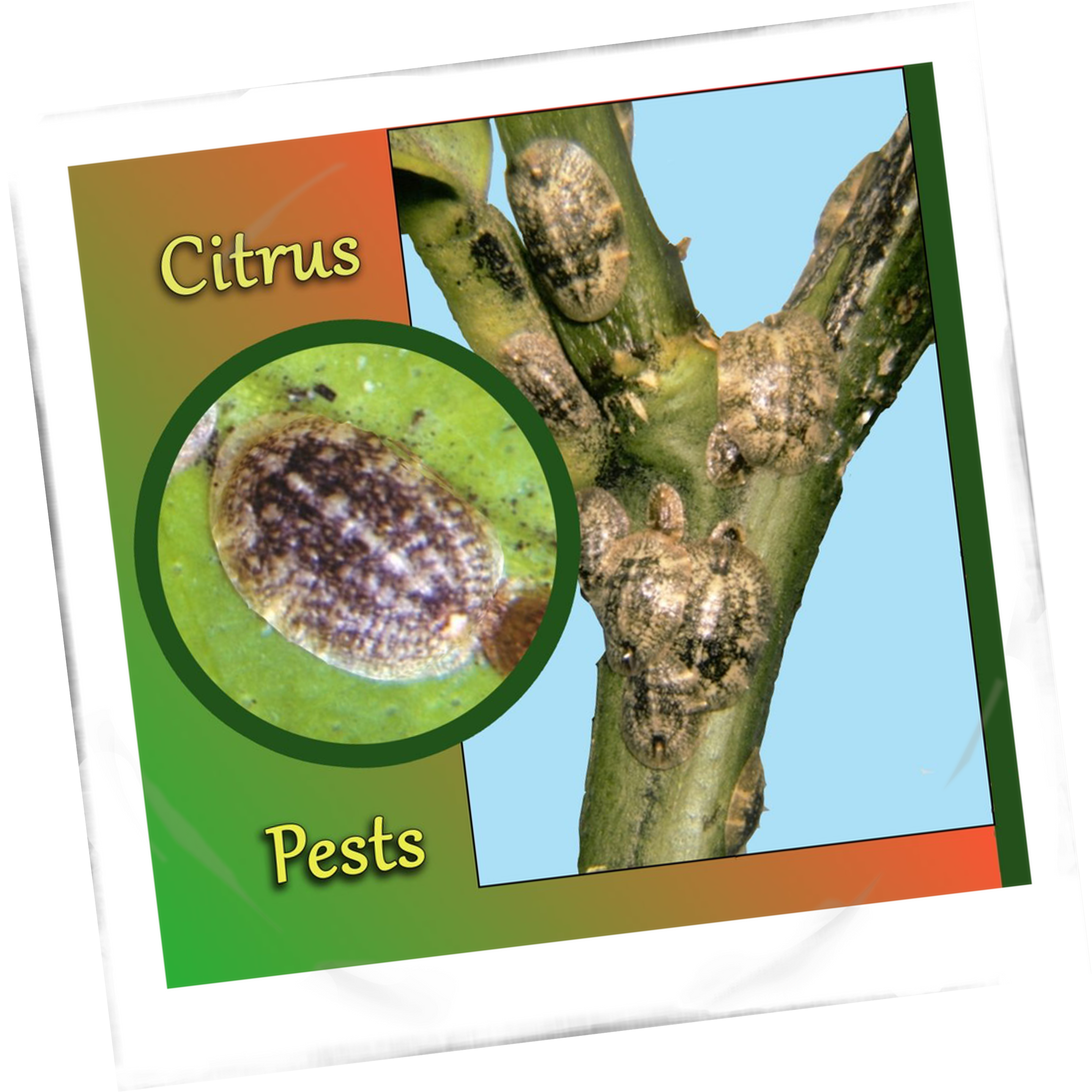
Controlling Pests
Yeah, we were gonna use a picture of a bunch of pests that bother citrus trees for this page, but...gross. The picture sums up how we feel about those creepy crawlies.
There are some common pests that tend to cause trouble for citrus trees. Below we've outlined the ones we've seen and how to treat them.
It is important to note that if you have other plants in your house, they may become infested - or they may be the cause of the infestation on your tree. If you notice any pests on any of your plants, it is always a good idea to check over the rest of your plant collection.
Be sure you check over all of your plants before bringing them in for the winter!
The easiest way for pests to get into your house is by being carried inside with your plants.
If the plants are outside, no worries. Mother Nature will help to control pests with rain water, wind, ladybugs, wasps, and other bugs. When they come inside and Mother Nature can no longer intervene, it will be up to you to get rid of the pests.
Alright. Whatcha got?
-

Aphids
First sign:
A black sooty substance on the leaves that won't wipe away (this is actually a fungus that is feeding on the aphids' excrement...yuck). You may also see the aphids crawling around on the tree.
Life cycle:
8-27 days
How to get rid of 'em:
Mainly: PERSISTENCE. Pressured water is a great solution. Use pressured water on every leaf and branch once per day for a week. The next week, use pressured water every other day. If you're looking for more intense warfare, we can recommend pyrethrum (a naturally-occurring substance found in chrysanthemums). Be careful if you use pyrethrum: it can be toxic to cats and is VERY toxic to bees. You'll want to make sure to follow all instructions on the bottle and use it in a controlled environment. It is relatively safe for humans, but it can cause some skin irritation.
-

Spider mites
First sign:
Cobwebs on your tree
Life cycle:
8-40 days
How to get rid of 'em:
Mainly: PERSISTENCE. Pressured water is a great solution. Use pressured water on every leaf and branch once per day for a week. The next week, use pressured water every other day.
Many recommend horticultural oils, which may work at first, but in our opinion never gets the job fully done. Horticultural oils should not be sprayed often, as they tend to block air exchange and photosynthesis if left on the leaves, so it might actually even do a little damage.
-

Scales
First sign:
A black sooty substance on the leaves that won't wipe away (this is actually a fungus that is feeding on the scales' excrement...yuck).
Life cycle:
A few weeks to several months
How to get rid of 'em:
Scales are a little harder to treat as they cling tightly to the tree, and pressured water alone is not enough to get rid of them. However, the first step would be to use pressured water on every leaf and branch to blast off the crawlers (this exposes the scales that are clinging to the tree - otherwise they may be covered by the crawlers). Once the tree is dry (but in the same day), we recommend one of two things: (1) apply pyrethrum (a naturally-occurring substance found in chrysanthemums) OR (2) wipe every inch of the tree with a cloth and rubbing alcohol.
Use pressured water every day for a week, and then every other day the next week. If you choose to wipe the tree with a cloth and rubbing alcohol, this should be done every other day for two weeks. If you use pyrethrum, follow instructions on the bottle.
Be careful if you use pyrethrum: it can be toxic to cats and is VERY toxic to bees. You'll want to make sure to follow all instructions on the bottle and use it in a controlled environment. It is relatively safe for humans, but it can cause some skin irritation.
Questions? Or is another pest bothering your tree?
Reach out to us and we will be happy to provide information or suggestions for pest control.
More information
-
Citrus Tree Care 101
Time to go back to the basics? -
Common Issues
Yellow leaves? Losing leaves? We can help!
Subscribe to our emails
Be the first to know about new collections and exclusive offers.



